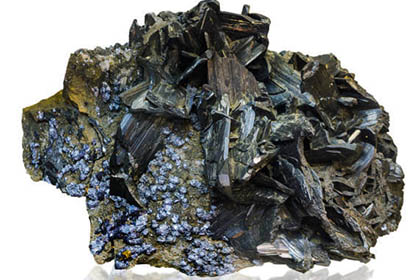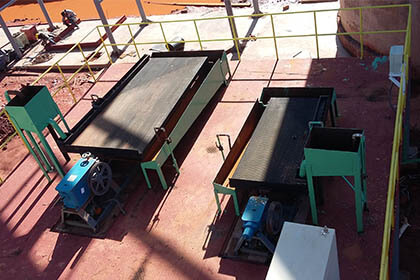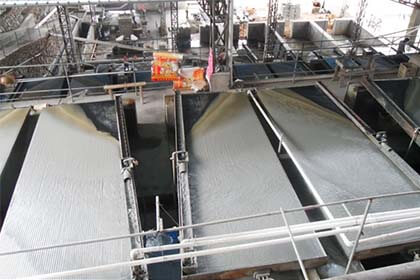Classification and Selection of Shaking Table You Need To Know!
 Star
Star
 Jan 21, 2021
Jan 21, 2021
 2859
2859
If you want to know more details about equipment, solutions, etc, please click the button below for free consultation, or leave your requirements!

Shaking table is the most widely used and most efficient gravity separation equipment for sorting fine ore. Shaking table beneficiation can be used as an independent beneficiation method, or can be combined with jigs, flotation machines, magnetic separators, centrifugal concentrators, spiral chutes and other beneficiation equipment. Shaking tables have been widely used in the separation of iron, manganese, tin, niobium, tantalum and other rare metals and precious metal ores. According to statistics, about 30%-80% of the concentrate is passed through the shaking table during the gravity separation of tungsten. Before the advent of flotation process, it was also used for the separation of non-ferrous metal ores.
This article will introduce in detail the composition and classification of the shaker, the selection of shaker types and the precautions for the operation of the shaker, to help you further understand the types and selection criteria of the shaker. Let’s get started.
01 Composition and Classification of Shaking Table
BackThe shaking table is mainly composed of three parts: head (transmission mechanism), bed surface and frame. The shaking table is an approximately rectangular wide bed surface.
The bed surface is slightly inclined to the tailings side, with bed strips or grooves carved on it.
The washing water fed by the water supply tank flows in a thin layer along the oblique direction. The transmission mechanism at the transmission end makes the bed surface reciprocate asymmetrically. The number of times the bed surface moves back and forth per minute is called stroke times. The distance the bed surface advances and retreats is called stroke. When the slurry is fed into the ore trough, under the action of water flow and shaking, ore particles of different densities are distributed in a fan shape on the bed surface.
There is no unified classification method for shaking tables.
Classified according to the particle size of the materials:
Coarse sand shaking table, the processing size is 2-0.2 mm;
Fine sand shaking table, the processing size is 0.2-0.074 mm;
Mineral mud shaking table, the processing size is 0.074 mm.
Classified according to the head:
cam lever rockers;
eccentric link rockers;
spring rockers.
Classified according to different ore types:
shaking table for mineral processing
shaking table for coal processing.
Classified according to the structure:
single-layer or multi-layer distinctions;
floor or suspension.
Classified according to the force field:
gravity shaker;
centrifugal shaker.

02 Choice of Shaking Table
BackThe actual conditions such as the maximum particle size of the raw ore , processing capacity and plant area determine the selection of the shaker. The coarse sand shaking table is used when the feed size is greater than 0.2mm, the fine sand shaking table is used when the particle size is 0.2~0.074mm, and the mud shaking table is used when the particle size is less than 0.074mm.
The finer the feed size, the lower the capacity of the shaking table. For example, if a cloud tin shaking table is used to process tin ore, the production capacity of the coarse sand shaking table with 0.5-0.2mm feed size is about 0.8-1.0t/h, while the capacity of the coarse sand shaking table with 0.2~0.074mm feed size is only 0.2~0.3t/h.
When the plant area is small, the multi-layer shaking table can be used. The installation of the shaker is required to be flat, there should be no abnormal jumps during operation, and the longitudinal direction is generally horizontal, but when handling coarse-grained raw materials, the concentrate end should be 0.5° higher to improve the beneficiation effect; while the shaking table for fine slurry, the concentrate end should be 0.5° lower to facilitate the movement of fine-grained concentrate.
03 Precautions for Shaking Table Operation
BackThe main points of the shaking table operation are as follows:
(1) Suitable stroke and frequency. The appropriate value of stroke and frequency is mainly related to the feed size, and secondly to the load of the shaker and the density of the ore. When processing materials with a large particle size and a thick bed, large strokes and small frequency are used; when processing fine sand and sludge, small strokes and large frequency should be used. When the load on the bed surface is increased or materials with higher density are enriched, larger strokes and frequency should be used. The appropriate value of stroke and frequency should be determined by careful examination in practice.
(2) Suitable lateral slope of the bed surface. Increasing the lateral slope will enhance the sliding effect of ore particles and increase the speed of tailings discharge, but the zoning of the beneficiation area becomes narrower. Generally, when dealing with coarse-grained materials, the horizontal slope should be larger; when dealing with fine-grained materials, the horizontal slope should be smaller. For example, the adjustment ranges of the cross-slope angle of coarse sand, fine sand and sludge are: 2.5°~4.5°, 1.5°~3.5° and 1°~2°, respectively. In addition, the lateral slope of the shaking table must match the size of the lateral water flow to have a good separation effect.
(3) The size of the flushing water should be appropriate. The flushing water includes two parts: feed water and washing water. The flushing water should be evenly distributed on the bed surface and the size should be appropriate. When the flushing water is large, the grade of the concentrate increases and the recovery rate decreases. Generally, when processing coarse-grained materials or concentrating, the flushing water should be larger.
(4) The capacity of feed ore is appropriate and even. The capacity of feed ore is related to the feed particle size. The coarser the particle size, the larger the feed capacity should be. For specific materials, the amount of ore should be controlled to maximize the utilization rate of the bed surface, make the zoning become obvious, and keep the tailings grade within the allowable range. If the amount of ore is too large, the recovery rate will drop significantly. In addition, once the suitable amount of ore has been found, it must be kept constant and even, otherwise the zoning will be unstable and cause bad impact on concentrating index.
(5) The ore quality score should be appropriate. Generally, the feed ore mass fraction ranges from 15% to 30%. The feed ore mass fraction of coarse-grained materials can be thinner, and that of the fine mud should be thicker. Most of the water contained in the feed slurry flows down laterally along the tailing belt, and the fine mud is easily washed away, causing the loss of fine-grained metal minerals.
(6) Preparation of materials before separation. The particle size of the material fed into the shaking table should be controlled within 0.037mm~3mm. Because the particle size has a greater impact on the concentrating index, the materials should be classified before separation. If the material contains a large amount of fine sludge, it will be difficult to recover, and the increase in the viscosity of the ore slurry will slow down the sedimentation of heavy minerals and cause heavy mineral loss. For such materials, pre-desludge should be carried out.
04To Wrap Up
BackThe above are the basic classification and selection methods of shaking tables. In actual production, it is necessary to consider various factors. It is recommended to choose equipment manufacturers with overall plant selection qualifications to purchase shaking tables to achieve the goal of maximizing comprehensive benefits.
If you have other questions or want to buy a shaking table, you can contact our online customer service or leave a message, we will contact you as soon as possible!
 +86 18716000713
+86 18716000713 xlyin@xinhaimining.net
xlyin@xinhaimining.net




 Message
Message Chat Now
Chat Now

















